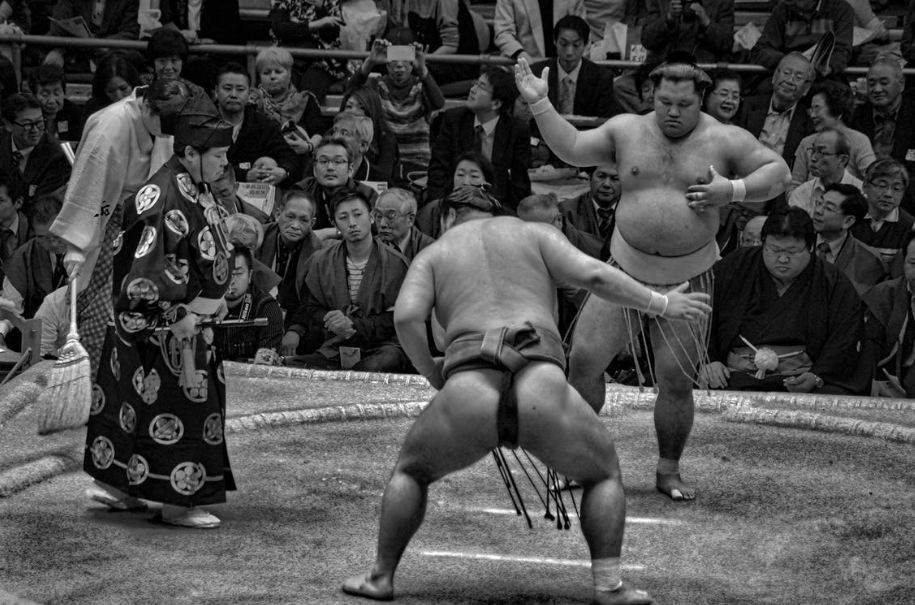What Does the Crane Symbolize in Japanese Culture?
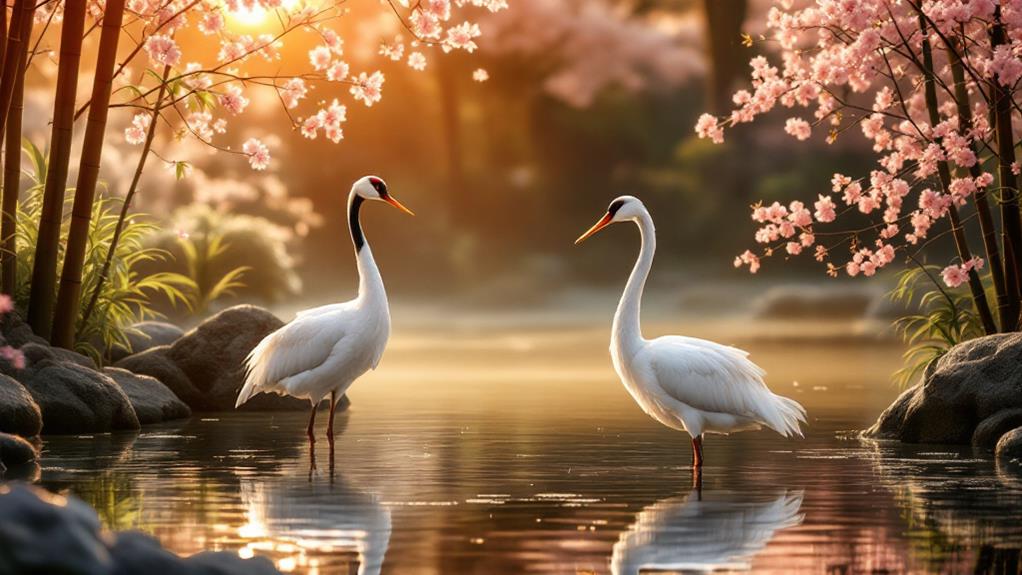
In Japanese culture, cranes symbolize longevity and good luck, often believed to live a thousand years. They represent fidelity, making them popular in wedding traditions where they're linked to long, harmonious marriages. Origami cranes aren't just art; folding a thousand (senbazuru) is said to grant wishes, symbolizing hope and patience. Cranes feature prominently in folklore, conveying themes of love, gratitude, and transformation. They're also central to New Year and peace celebrations, embodying fresh beginnings and healing. Through artistic and literary works, cranes capture the essence of peace and grace. There's much more to investigate within their mystical significance.
Symbol of Longevity
In Japanese culture, the crane's symbolism as a symbol of longevity is both profound and enduring. You might find it interesting that crane mythology often portrays these majestic birds as creatures living for a thousand years. This belief roots itself in ancient tales where cranes are seen as harbingers of a long, prosperous life. When you explore these stories, you'll notice how cranes are depicted as wise and graceful, embodying endurance and resilience. This emphasis on longevity and wisdom can be compared to the traditional Japanese family structure which likewise values endurance and generational continuity. But it's not just myth that underscores the importance of cranes in Japan. There's a significant focus on crane conservation today. Efforts to protect these birds are widespread, driven by a deep respect for their symbolic meaning and ecological importance. You'll see that preserving crane habitats and ensuring their survival reflects a commitment to honoring their role in Japanese culture. By understanding crane mythology and supporting conservation efforts, you're participating in a legacy of valuing both nature and cultural heritage.
Representation of Good Luck
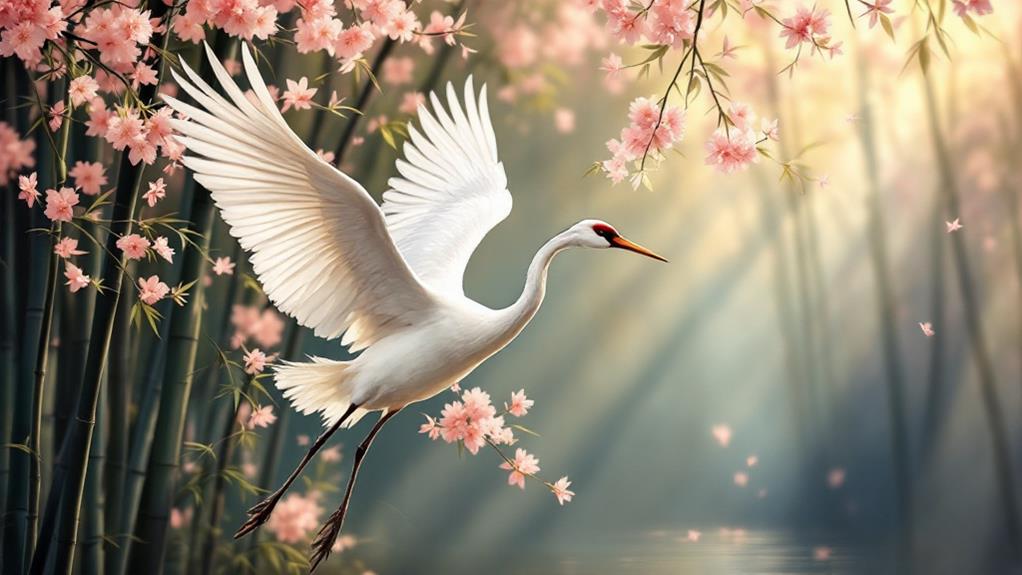
You'll uncover that in Japanese culture, cranes are more than just symbols of longevity—they're also seen as harbingers of good luck. This belief stems from ancient folklore where cranes are considered mystical creatures capable of granting wishes. The role of festivals in Japanese community life often highlights the crane's significance, as these events bring people together in shared cultural experiences. When you see a crane gracefully soaring in the sky, it's often interpreted as a sign of prosperity and fortune on the horizon.
Many people choose to capture this positive energy through crane tattoos. These tattoos aren't just decorative; they're deeply meaningful, representing a wish for good luck and protection. By carrying this symbol on your skin, you're embracing the crane's auspicious qualities and inviting good fortune into your life.
Cranes also play a significant role in numerous crane festivals across Japan. These festivals celebrate the elegant bird's presence and its symbolic connection to luck and happiness. Whether it's through lively parades or traditional dances, the crane is at the heart of these joyous occasions, bringing communities together in hopeful celebration. As you participate in or witness a crane festival, you're reminded of the bird's powerful symbolism and its ability to inspire hope and positivity in everyone it touches.
Fidelity and Marriage
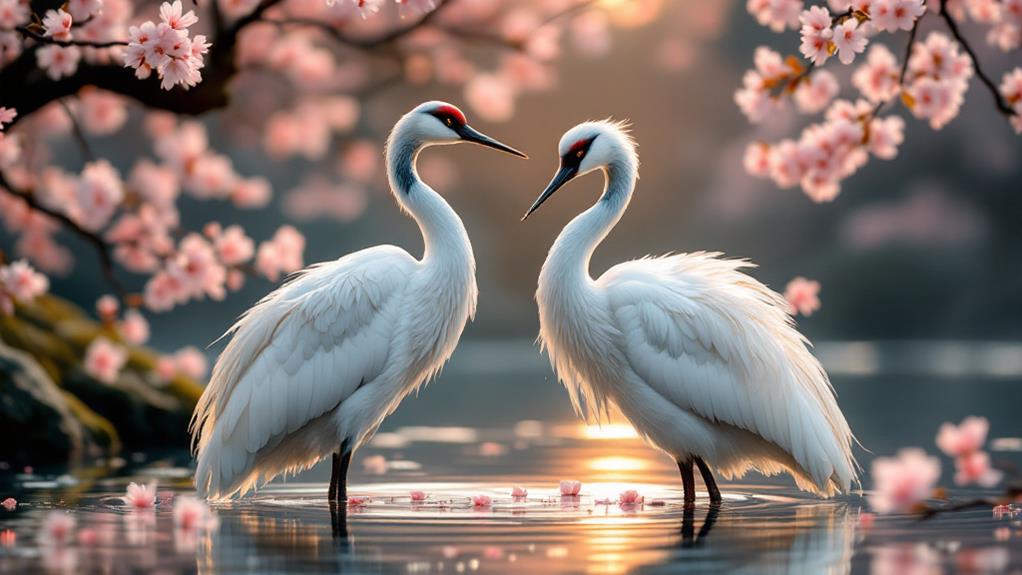
Loyalty weaves through the fabric of Japanese culture, and cranes embody this virtue in the domain of fidelity and marriage. These majestic birds are celebrated for their lifelong partnerships, making them ideal symbols in wedding traditions. When you attend a Japanese wedding, you might notice crane motifs everywhere—from the intricate designs on kimonos to the elegant folds of origami adorning tables. These motifs serve as reminders of the couple's commitment to each other, reflecting the crane's unwavering loyalty to its mate.
Incorporating cranes into wedding traditions isn't just about aesthetics; it's about infusing the ceremony with deeper meaning. You might see cranes embroidered on kimono sleeves, symbolizing the hope for a long and prosperous marriage. The act of folding a thousand origami cranes, known as senbazuru, is a common practice, believed to grant the couple happiness and longevity. This tradition underscores the importance of patience and dedication, qualities crucial for a successful marriage.
Artistic Inspirations
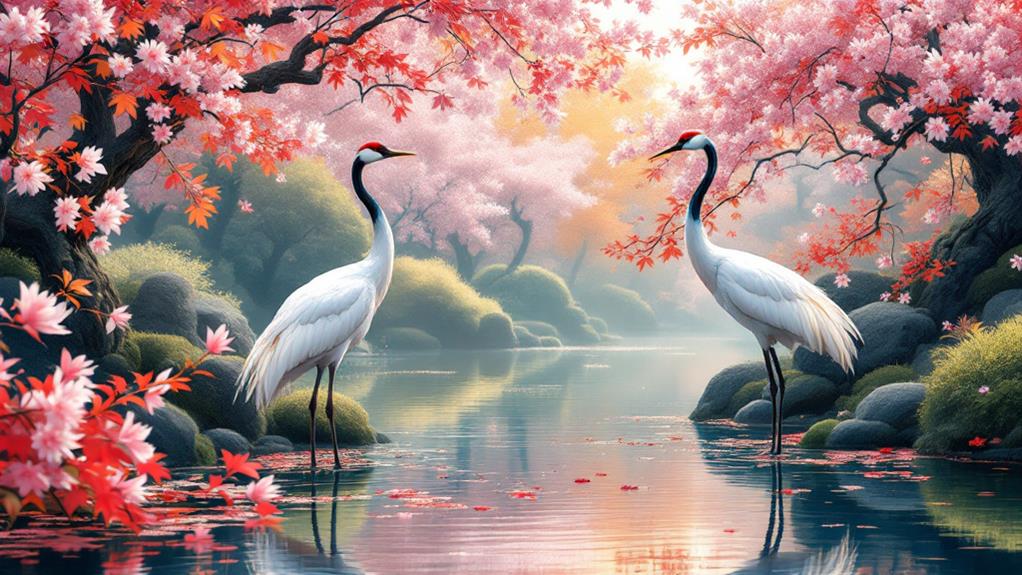
Cranes, while deeply symbolic in weddings, also soar through the domains of art in Japanese culture. You'll find crane motifs woven into numerous artistic expressions, capturing the elegance and grace of these majestic birds. In Japanese art, cranes often symbolize good fortune and longevity, inspiring artists across time. Here are some stunning ways cranes have influenced Japanese art:
- Paintings: Artists have depicted cranes in breathtaking landscapes, seamlessly blending them with elements like water, mountains, and trees. These paintings often convey peace and harmony, inviting viewers into a serene world.
- Folding Screens: You'll notice intricate crane designs on folding screens, which serve both decorative and functional purposes. The cranes depicted here often tell stories of nature's beauty and the interconnectedness of all life.
- Textiles: From kimonos to obi sashes, crane motifs adorn traditional Japanese garments. These textiles not only celebrate artistic craftsmanship but also carry wishes for happiness and prosperity.
- Ceramics: Japanese potters incorporate crane imagery into their works, creating pieces that are both utilitarian and aesthetically pleasing. These ceramics often embody the balance between form and function.
Through these artistic expressions, cranes continue to inspire and captivate, bridging the past with the present.
Cranes in Literature
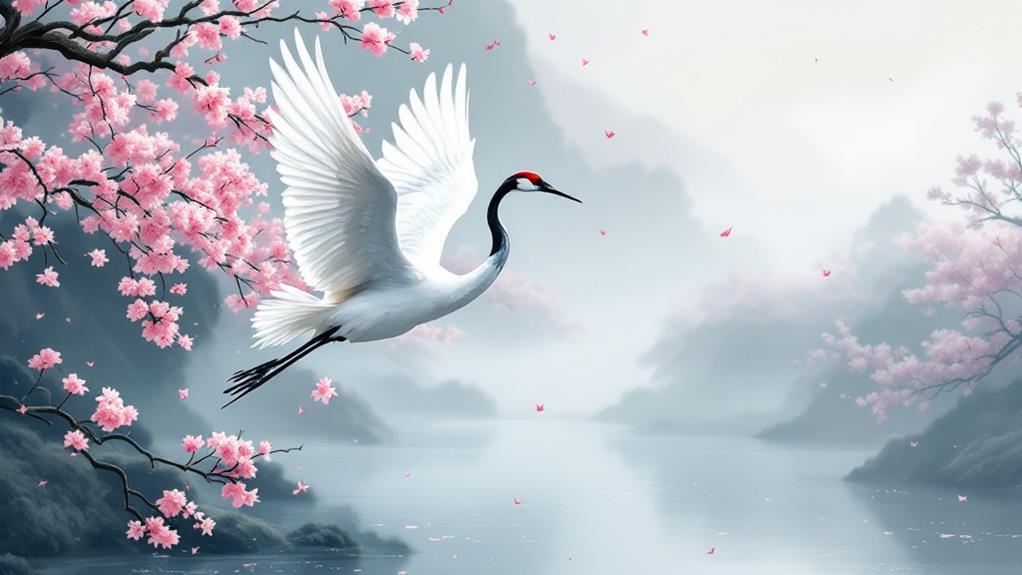
In Japanese literature, the crane often emerges as a powerful symbol of hope, fidelity, and transformation. When you explore classic works, you'll notice how authors skillfully weave crane symbolism into their narratives, using this majestic bird to convey deeper meanings. The crane is frequently associated with longevity and good fortune, lending a sense of serenity and grace to the stories.
Authors employ diverse literary devices to highlight the crane's symbolic significance. Metaphors and similes often compare characters' paths to the crane's elegant flight, suggesting an aspiration for peace and resolution. In poetry, the crane serves as a poignant motif, encapsulating themes of renewal and continuity. Its presence often signifies a turning point, where characters undergo profound personal growth or reunite after periods of hardship.
Through these literary devices, the crane becomes more than just a bird; it transforms into a guiding light of inspiration and perseverance. By understanding the role of crane symbolism in these works, you gain insight into the cultural values and philosophical reflections deeply embedded in Japanese literature. Next time you read a Japanese story, watch for the crane's subtle influence, and you'll uncover layers of meaning that enrich the narrative.
Folklore and Myths
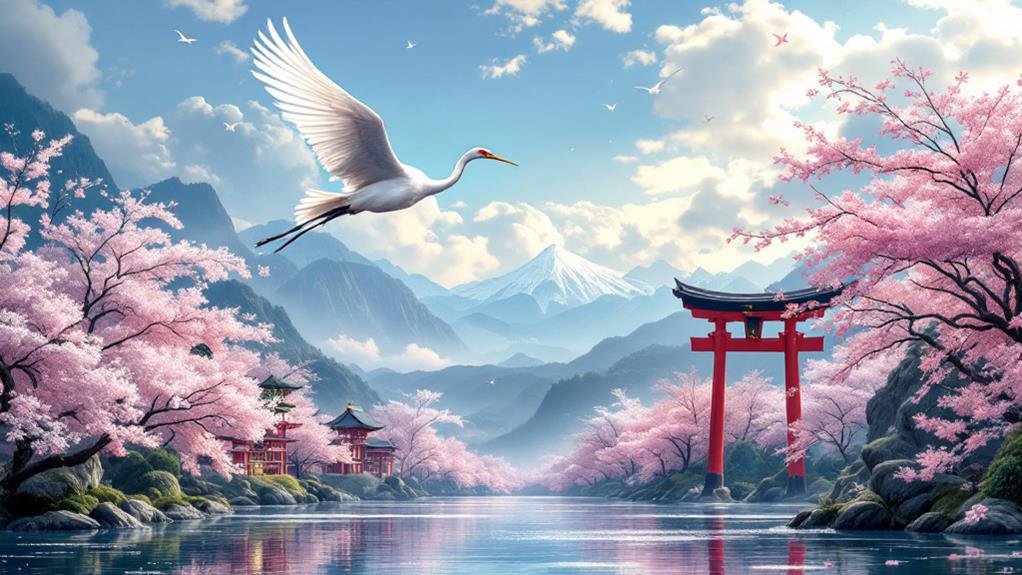
Investigate the rich tapestry of Japanese folklore and myths, and you'll find cranes playing a central role in numerous tales that capture the imagination. These majestic birds are often associated with longevity, happiness, and peace, weaving their way through countless stories. You'll uncover that Japanese legends raise cranes to divine status, often portraying them as Crane deities with magical powers. Such stories highlight the cultural significance of these creatures, emphasizing their revered place in Japanese tradition.
Here are a few examples of how cranes appear in folklore:
- The Grateful Crane: In this popular tale, a crane repays a man for his kindness, embodying themes of gratitude and selflessness.
- The Crane Wife: This story tells of a crane taking human form to marry a man, showcasing themes of love and sacrifice.
- Tales of Tsuru no Ongaeshi: Folktale variations of this legend emphasize the reciprocal nature of kindness and its rewards.
- Cranes in Shinto Beliefs: Cranes are seen as messengers of the gods, bridging the human and divine worlds.
Such stories highlight the crane's profound impact on Japanese culture, illustrating its enduring legacy.
Origami and Wishes

You'll find that cranes take on a special role in the art of origami, symbolizing hope and heartfelt wishes. In Japanese culture, folding a thousand paper cranes, known as "senbazuru," is believed to grant a wish. This tradition stems from the belief that cranes, known for their longevity, represent good fortune and healing. By mastering origami techniques, you can participate in this meaningful practice and create these intricate figures from paper.
Origami's essence lies in its simplicity—transforming a flat sheet of paper into a three-dimensional figure through precise paper folding. The crane is one of the most classic origami designs, often taught initially to beginners. As you fold each paper, you imbue it with your intentions and hopes. The process itself can be meditative, allowing you to reflect on your wishes as you carefully crease and bend the paper.
In completing a thousand cranes, you're not just crafting paper but also weaving a tapestry of wishes, dreams, and aspirations. This practice is a reflection of patience, perseverance, and the power of intention. Regardless for yourself or others, these folded cranes carry profound meaning, bridging art and heartfelt desires.
Rituals and Celebrations

Across Japan, cranes play a crucial role in various rituals and celebrations, symbolizing longevity, peace, and happiness. You'll find these majestic birds deeply woven into cultural events, each highlighting their cultural significance. Crane ceremonies stand as pillars of Japanese tradition, bringing together communities to honor this revered creature.
- Weddings: Cranes often feature prominently in Japanese weddings. You'll see them embroidered on wedding kimonos or folded into origami, embodying the couple's wish for a long and harmonious marriage.
- New Year Celebrations: During the New Year, cranes are depicted in different art forms. You might notice them in greeting cards or decorations, symbolizing fresh beginnings and aspirations for a prosperous year ahead.
- Tanabata Festival: In the Tanabata Festival, people hang paper cranes on bamboo trees. This tradition is believed to grant wishes, showcasing the crane's role in bridging the earthly and spiritual domains.
- Peace Ceremonies: Cranes are central to peace ceremonies, particularly in Hiroshima. You'll witness thousands of paper cranes displayed in memory of those lost to war, reflecting a collective hope for global peace.
These crane ceremonies illustrate Japan's deep reverence for these birds, highlighting their enduring cultural significance.
